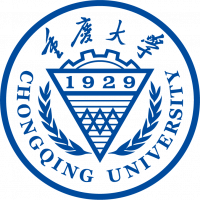We study the physical and chemical properties of several atmospheric molecules and their clusters to understand the fundamental aspects of their atmospheric chemistry. We especially interested in (1) the atmospheric aerosol precursors and thechemistry of their clustering, and (2) freons (Hydrofluorocarbons, hydrofluorochlorocarbon,Chlorofluorocarbons)
(1)Atmospheric aerosol precursors and the chemistry of their clustering
The atmospheric aerosol is of central important for particulate pollution andpublic health, which normally consists sulfate, nitrate, amines, dust and otherorganic components. However, a molecular level knowledge on the formation of atmospheric particle remains unclear. Understanding the nature upon theformation of critical clusters is the first step to reveal the new particle formation mechanism. Molecular structure and non-covalent interactions of these clusters valuable information relevant to cluster properties. With these motivations, a series of molecular clusters formed among sulfuric acid and other molecules including water, organic acid, ammonia/amines and nitriteoxides/nitrate acid are proposed to be investigated. The structures and non-covalent interactions of these clusters will be deduced from high resolution microwave spectroscopy combined with theoretical calculations, while the structural evolution upon the change of precursors and the numbers of subunits will be discussed. The information being provided will unravel thevery initial states of the formation of new atmospheric particles.
(2) Atmospheric chemistry of Freon
Considerable attention has been dedicated during the last years to Freons. Much attentionhas been dedicated to their impact on the atmospheric processes, in relation toboth the role in the reduction of ozone and in the greenhouse effect. Under most atmospheric condition, OH radicals govern the decomposition of Freon. The fluorine or chlorine atoms can form weak intermolecular interaction with OH radicals or other atmospheric molecule such as water forming so-called pre-reactive complexes, which may significantly change the atmospheric fate ofthese compounds. The molecular structure, intermolecular non-covalent interactions and the internal dynamics are the crucial factors that determinethe properties of the pre-reactive complex. We investigate the molecularstructure, non-covalent bonding and internal dynamics of a series of pre-reactive complexes formed by Freon, OH radicals and water molecules, by means of high resolution microwave spectroscopy and quantum chemical calculations. The investigation will generate plenty of information, at amolecular level, to provide an understanding of the fundamental atmospheric chemistry of Freon and also to reveal the water effects to the degradation processes.



